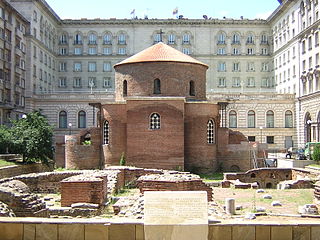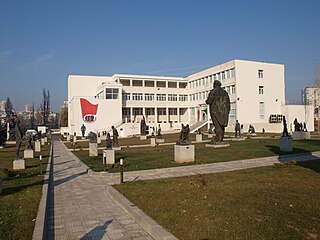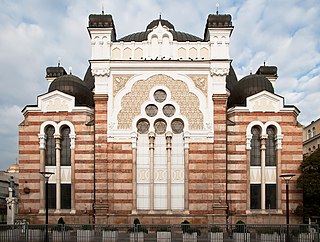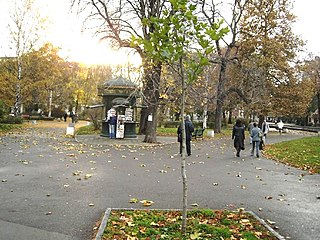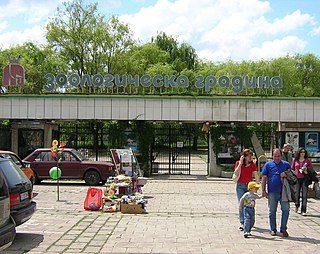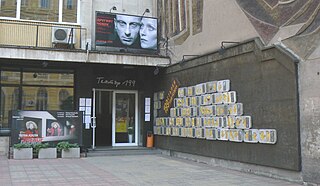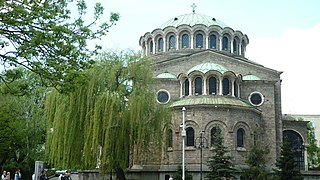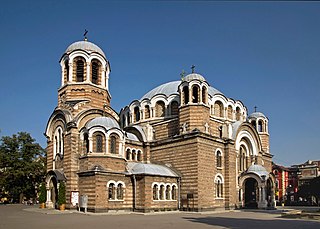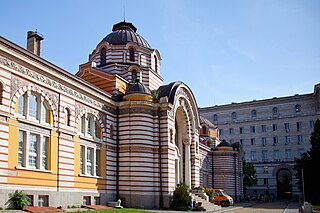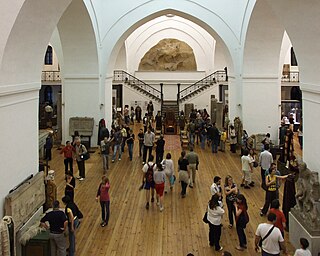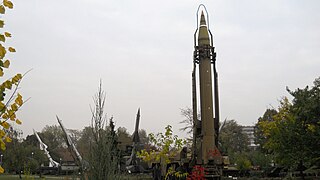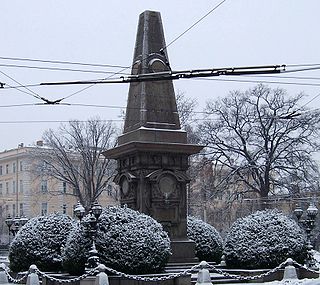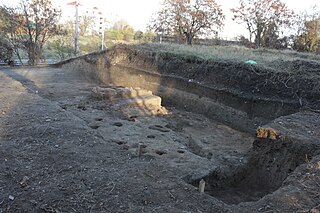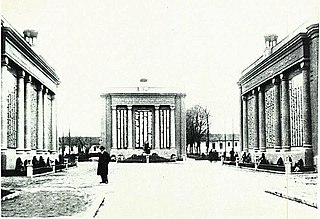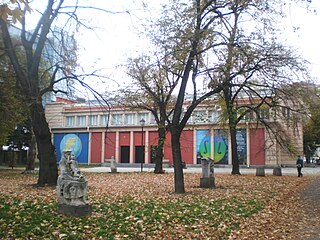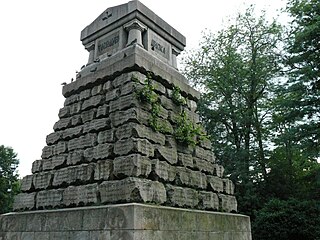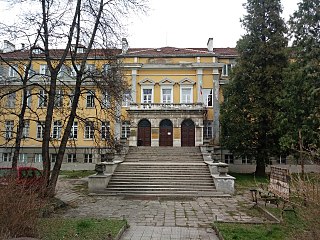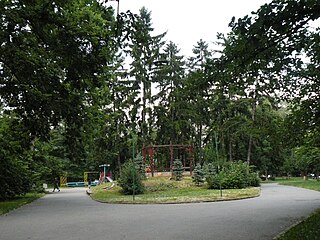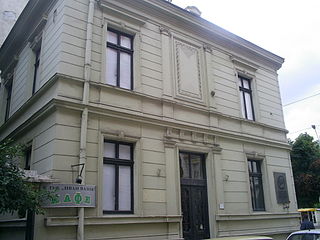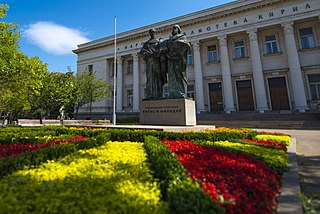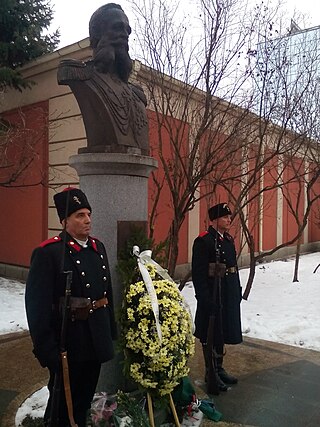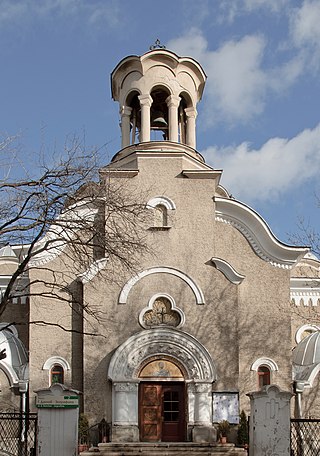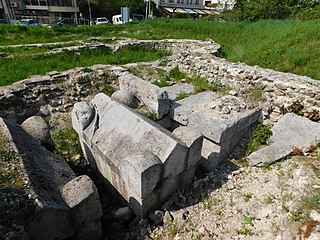38 Sights in Sofia, Bulgaria (with Map and Images)
Legend
Premium Sights
Book tickets, guided tours and activities in Sofia.
Guided Free Walking Tours
Book free guided walking tours in Sofia.
Welcome to your journey through the most beautiful sights in Sofia, Bulgaria! Whether you want to discover the city's historical treasures or experience its modern highlights, you'll find everything your heart desires here. Be inspired by our selection and plan your unforgettable adventure in Sofia. Dive into the diversity of this fascinating city and discover everything it has to offer.
Sightseeing Tours in SofiaActivities in SofiaThe Church of Saint George is a Late Antique red brick rotunda in Sofia, Bulgaria. Built in the early 4th century as Roman baths, it became a church inside the walls of Serdica, capital of ancient Dacia Mediterranea during the Roman Empire and Byzantine Empire. The Early Christian church is considered the oldest building in modern Sofia and belongs to the Bulgarian Orthodox Church.
2. Museum of Socialist Art
The Museum of Socialist Art in Sofia is a museum of art which covers the history of the communist era in Bulgaria. It was established on 19 September 2011 amidst a controversy over the name, which was initially proposed as "Museum of Totalitarian Art". The museum's collection of large and small statues, busts, and paintings represents the period from 1944 to 1989, from the establishment of the People's Republic of Bulgaria to the fall of communism. The museum spread over an area of 7,500 square metres (81,000 sq ft) in the Sofia suburb known as "Red Star" is in three parts - a park with sculpture installations drawn from the communist period, an exhibition hall with paintings and easel representations, and a media or video hall in which films and newsreels related to the communist period are screened.
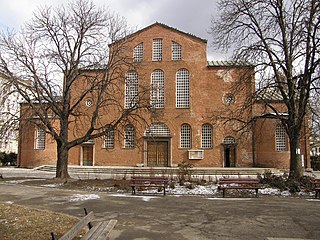
The Saint Sofia Church is the oldest church in the Bulgarian capital Sofia, dating to the fourth century. In the predecessor building took place the Council of Serdica held most probably in 343 and attended by 316 bishops. In the 14th century, the church gave its name to the city, previously known as Serdika (Сердика).
The Sofia Synagogue is a Romaniote Orthodox Jewish congregation and synagogue, located in Sofia, Bulgaria. Completed in 1909, the synagogue is the largest synagogue in Southeastern Europe, the third-largest in Europe, and one of two active synagogues remaining in Bulgaria.
The City Garden is Sofia, the capital of Bulgaria's oldest and most central public garden, in existence since 1872. It is located between Tsar Osvoboditel Boulevard to the north, Knyaz Alexander Battenberg Street to the west and Joseph Vladimirovich Gourko Street to the south, in the historical centre of the city.
6. Royal Palace

The Royal Palace, is a historical and architectural landmark in the heart of the Bulgarian capital, Sofia, situated at the Battenberg Square. The palace played a pivotal role in the history of Bulgaria, witnessing the country's journey through monarchy, communism and democracy. Erected in the late 19th century as the royal residence, the palace's architecture blends various styles, with prominent influences from Austrian Neo-Baroque and French Rococo.
7. Alexander Nevsky Cathedral
St. Alexander Nevsky Cathedral is a Bulgarian Orthodox cathedral in Sofia, the capital of Bulgaria. Built in Neo-Byzantine style, it serves as the cathedral church of the Patriarch of Bulgaria and it is one of the 50 largest Christian church buildings by volume in the world. It is one of Sofia's symbols and primary tourist attractions. St. Alexander Nevsky Cathedral in Sofia occupies an area of 3,170 square metres (34,100 sq ft) and can hold 5,000 people inside. It is among the 10 largest Eastern Orthodox church buildings. It is the largest cathedral in the Balkans. It is believed that up until the year 2000 it was the largest finished Orthodox cathedral.
8. Sofia Zoo
Sofia Zoo in Sofia, the capital of Bulgaria, was founded by royal decree on 1 May 1888, and is the oldest and largest zoological garden in Southeast Europe. It covers 36 hectares and, in March 2006, housed 4,850 animals representing 840 species.
9. Theatre 199 Valentin Stoychev
Theater 199 "Valentin Stoychev" is a stage space on the capital's Rakovski Street, dedicated to chamber performances by contemporary authors. After the death of its long-time director Valentin Stoychev in 2007, the theater adopted his name.
10. Holy Nedelya Church
Saint Nedelya Cathedral, is an Eastern Orthodox cathedral in Sofia, the capital of Bulgaria, a cathedral of the Sofia bishopric of the Bulgarian Patriarchate. The temple of Sveta Nedelya dates back to the 10th century, being a cathedral of the city from the 18th century. The sacred building has suffered destruction through the ages and has been reconstructed many times. The present building of the temple is among the landmarks of Sofia. It was designed by the famous Bulgarian architectural team Vasilyov-Tsolov. The relics of the Serbian king Stefan Uroš II Milutin are kept in the church.
11. Ivan Vazov National Theatre
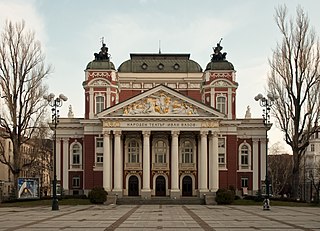
The Ivan Vazov National Theatre is Bulgaria's national theatre, as well as the oldest and most authoritative theatre in the country and one of the important landmarks of Sofia, the capital of Bulgaria. It is located in the centre of the city, with the facade facing the City Garden.
12. Sveti Sedmochislenitsi Church
The Sveti Sedmochislenitsi Church and formerly The Black Mosque is a Bulgarian Orthodox church in Sofia, the capital of Bulgaria. It was created in 1547 as an Ottoman mosque later converted into orthodox Church, and was inaugurated on 27 July 1903. The church is named after Cyril and Methodius and their five disciples, known in the Orthodox Church collectively as the Sedmochislenitsi.
13. Amphitheatre of Serdica
The Amphitheatre of Serdica was an amphitheatre in the Ancient Roman city of Ulpia Serdica, now Sofia, the capital of Bulgaria. Discovered in 2004 and the subject of excavations in 2005 and 2006, the ruins of the amphitheatre lie on two adjacent sites in the centre of modern Sofia. The amphitheatre was built in the 3rd–4th century AD on top of a 2nd–3rd century theatre, which had been ravaged by the Goths. However, the amphitheatre remained in use for less than a century and was abandoned by the 5th century.
14. Central Mineral Baths
The Central Mineral Baths is a landmark in the city center of Sofia, the capital of Bulgaria, a city known for the mineral springs in the area. It was built in the early 20th century near the former Turkish bath and was used as the city's public baths until 1986.
15. Roman Catholic Cathedral of St Joseph
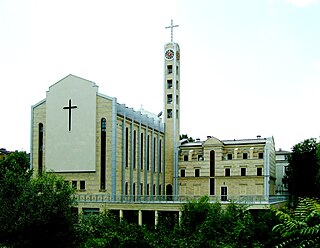
The Cathedral of St Joseph is a Latin Catholic cathedral in Sofia, the capital of Bulgaria. It is the co-cathedral of the Latin Diocese of Sofia and Plovdiv, together with the Cathedral of St Louis in Plovdiv.
16. Monument to the Tsar Liberator
The Monument to the Tsar Liberator is an equestrian monument in the centre of Sofia, the capital of Bulgaria. It was created in honour of Russian Emperor Alexander II who liberated the Russian Serfs and won the Russo-Turkish War of 1877-78.
17. The Unknown Soldier
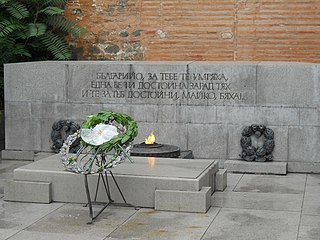
The Monument to the Unknown Soldier is a monument in the centre of Sofia, the capital of Bulgaria, located just next to the 6th-century Church of St Sophia, on 2 Paris Street. The monument commemorates the hundreds of thousands of Bulgarian soldiers who died in wars defending their homeland. Ceremonies involving the President of Bulgaria and foreign state leaders are often performed here.
18. National Archaeological Institute with Museum
The National Archaeological Museum is an archaeological museum in the centre of Sofia, the capital of Bulgaria. It occupies the building of the largest and oldest former Ottoman mosque in the city, originally known as Koca Mahmut Paşa Camii. The construction started in 1451 under grand vizier Veli Mahmud Pasha but due to his death in 1474 the mosque has been completed in 1494. The museum was established as a separate entity in 1893 as the National Museum directed by Czech Václav Dobruský with its headquarters in the former mosque that previously housed the National Library between 1880 and 1893.
Wikipedia: National Archaeological Museum, Bulgaria (EN), Website
19. National Museum of Military History
The National Military History Museum is a museum dedicated to military history in Sofia, Bulgaria. A structure of the Ministry of Defence, it has existed under various names and subordinate to various institutions since 1 August 1914. It consists of 5,000 m2 of indoor and 40,000 m2 outdoor exhibition area, changing exhibits, a library and a computer centre.
Wikipedia: National Museum of Military History, Bulgaria (EN), Website
20. Alexander of Battenberg
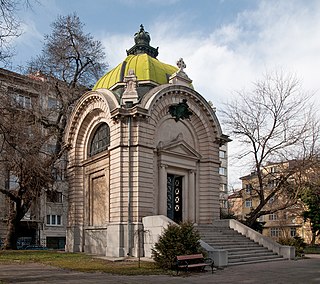
The Memorial Tomb of Alexander I of Battenberg, better known as the Battenberg Mausoleum in Sofia, the capital of Bulgaria, is the mausoleum and final resting place of Prince Alexander I of Bulgaria (1857–1893), the first Head of State of modern Bulgaria.
21. National Ethnographic Museum
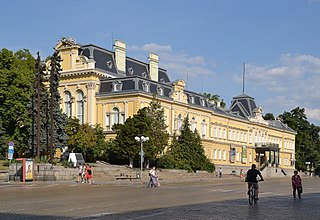
The Ethnographic Institute with Museum is a state cultural institution at the Bulgarian Academy of Sciences in Sofia for the development of ethnology and parallel preservation of the material wealth of the past of the Bulgarian people.
Wikipedia: Институт за етнология и фолклористика с етнографски музей (BG)
22. Катедрален храм “Успение Богородично”
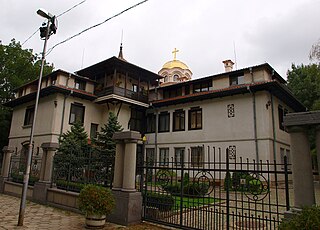
The Bulgarian Catholic Eparchy of Saint John XXIII of Sofia is an eparchy of the Bulgarian Greek Catholic Church which is a sui iuris ("autonomous") Eastern Catholic church based in Bulgaria. As a particular church of the Catholic Church, it is in full communion with the Holy See. The Church is organised as a single eparchy. Its liturgical usage is that of the Byzantine Rite in the Bulgarian language. It was elevated from an Apostolic Exarchate to a full eparchy by Pope Francis on 12 October 2019. The cathedral church of the eparchy is the Cathedral of the Dormition, in Bulgaria's capital Sofia.
Wikipedia: Bulgarian Greek Catholic Eparchy of Sofia (EN), Website
23. Vasil Levski Monument
The Monument to Vasil Levski in the centre of Sofia, the capital of Bulgaria, is one of the first monuments to be built in the then newly liberated Principality of Bulgaria. It commemorates the hanging of Bulgarian national hero and major revolutionary figure Vasil Levski on the same spot on 18 February 1873.
24. Neolithic Settlement of Slatina
Early Neolithic settlement Slatina-Sofia is a prehistoric settlement-one of the largest in the Central Balkans. It is a multilayered archeological site located in the eastern part of Sofia, south of Slatina. It occupies an uninhabited terrace on the left bank of the Slatinska River. Its total reserved area is about 80 acres, but probably during its existence in centuries it grows and shrinks over an area of about 300 acres. It occurred at the end of the 7th millennium BC, in the early Neolithic period, and existed for more than half a millennium - until the middle of the 6th millennium BC. The cultural layer accumulated during this period reaches a thickness of up to 4 m. Eight consecutive levels of habitation have been registered, in which the remains of the life of prehistoric people are found: destructions from burned and unfinished houses, facilities and objects of their interior, ritual structures surrounding Boops, numerous stone, bone, horn and ceramic cannons, ceramic vessels, animal bones and human remains. Due to its geographical location, the Slatin settlement is a mediator in the central zone of the Balkans and probably for this reason its inhabitants are carriers of active innovative thinking and an engine of cultural development in the region.
25. Войнишки мемориал на Първи и Шести софийски пехотен полк
The memorial of the First Infantry Regiment of Sofia and the Sixth Infantry Regiment of Tarnovo of the First Infantry Division of Sofia, called "Iron" or "Shopska", was opened on October 28, 1934 by Tsar Boris III. Military celebrations, parades, commemorations and other celebrations were held in front of it until the Second World War.
26. Sofia City Art Gallery
The Sofia City Art Gallery was established on October 22, 1928 by order of Gen. Vladimir Vazov, then mayor of Sofia Municipality. She was accommodated in the reconstructed building of the City Casino at 1 Gurko Street.
Wikipedia: Софийска градска художествена галерия (BG), Website
27. Russian Monument
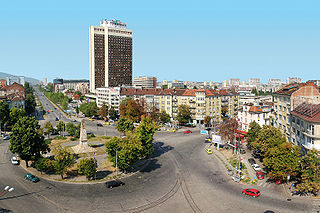
The Russian Monument is a monument in Sofia, the capital of Bulgaria. The first monument to be built in the capital of the newly liberated Principality of Bulgaria, it was unveiled on 29 June 1882 and is located on the road which Osman Nuri Paşa used to flee from Sofia to Pernik on 22 December 1877.
28. Doctors Memorial
The Doctor's Monument is a monument in the Doctor's Garden in Sofia. It was built in 1882 – 1884 according to the project of the Czech architect A. I. Tomašek. It is a truncated four-sided pyramid, topped with a granite sarcophagus. On the four sides of the convex stones are carved the names of 531 doctors and orderlies who died in the Russo-Turkish War of 1877-1878, most of whom worked in the mission of the Russian Red Cross and fell in the battles of Pleven, Plovdiv, Mechka and Mount Shipka.
29. Sfumato Theatre Workshop
Sfumato Theatre Workshop was founded in 1989 by directors Margarita Mladenova and Ivan Dobchev as an alternative to traditional Sofia theatres. He emphasizes the programs, at the expense of the repertoire. An example of Sfumatov's "programs" are the series of performances based on Dostoevsky, followed by those based on Strindberg.
30. National Anthropological Museum
The National Anthropological Museum was established on March 21, 2007 as part of the system of museums at the Bulgarian Academy of Sciences under the patronage of the Institute of Experimental Morphology, Pathology and Anthropology with Museum at the Bulgarian Academy of Sciences. It is located in the city of Sofia. Sofia, on blvd. 73 Tsarigradsko Shose Street, in close proximity to the building of the Ministry of Foreign Affairs.
31. Света Параскева
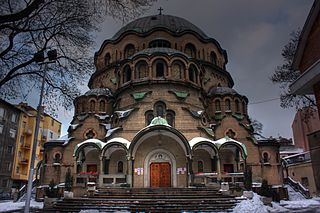
The Church of St Paraskeva is a Bulgarian Orthodox church in Sofia, the capital of Bulgaria. The church, dedicated to Saint Paraskeva, is located on 58 Georgi Rakovski Street in the centre of the city. It is the third-largest church in Sofia.
32. Doctors' Garden
The Doctors' Garden is a park in the Bulgarian capital Sofia between the Oborishte and Shipka streets. It is located behind the SS. Cyril and Methodius National Library and close to many of the historical monuments and state institutions in the capital.
33. Къща-музей Иван Вазов
The house museum "Ivan Vazov" is located on the corner of ul. "Rakovski" and ul. "Ivan Vazov", from which the entrance is located. This is the first literary museum in Bulgaria. It was opened on November 26, 1926.
Wikipedia: Къща музей „Иван Вазов“ (София) (BG), Website, Facebook
34. Roman Wall
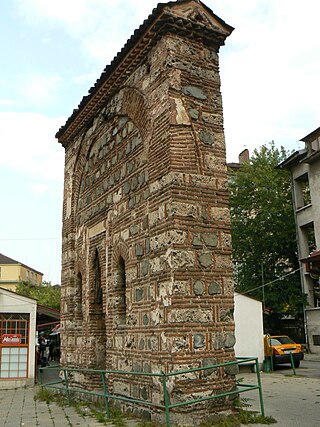
Stara Stena is a very short street occupied by a small market in the Lozenets district of Sofia, Bulgaria. The street has a length of about 90 m and connects Yavorets Street with Hristo Smirnenski Boulevard.
35. Saints Cyril and Methodius
The monument of St. St. Cyril and Methodius is located in front of the National Library "St. St. Cyril and Methodius" in the center of Sofia. To this day, the monument is considered one of the best achievements of Bulgarian monumental art.
36. Генерал Гурко
The monument to General Gurko in Sofia is the first in the capital dedicated to the memory of General Joseph Vladimirovich Gurko. It is located in the garden in front of the Sofia City Art Gallery at the corner of Gurko and Knyaz Alexander I streets. The author is the Russian sculptor Grigory Pototsky. It was erected on the eve of March 3, 2013 with entirely donation funds – a bronze figure was made by the Moscow government, and the other elements were donated by Bulgarian construction companies.
37. Intercession of the Mother of God
The Intercession of the Virgin Mary is an Orthodox church in the Bulgarian capital Sofia, located not far from the Russian Monument. It was built in 1922-26 by Yordanka Filaretova. The iconostasis is one of the few original gilded iconostases in Bulgaria. It was made in Mount Athos on Mount Athos.
38. Късноантичен мавзолей
The sanctuary complex in the "South Park" district in Sofia is located next to the South Park, on ul. "Dimitar Hadzhikotsev". In ancient times, on this hill, at that time located outside the boundaries of the then Serdica, there was a huge temple complex from the IV – VI century, stretching over an area of 3000 m², including a basilica and an ancient mausoleum.
Share
Disclaimer Please be aware of your surroundings and do not enter private property. We are not liable for any damages that occur during the tours.
